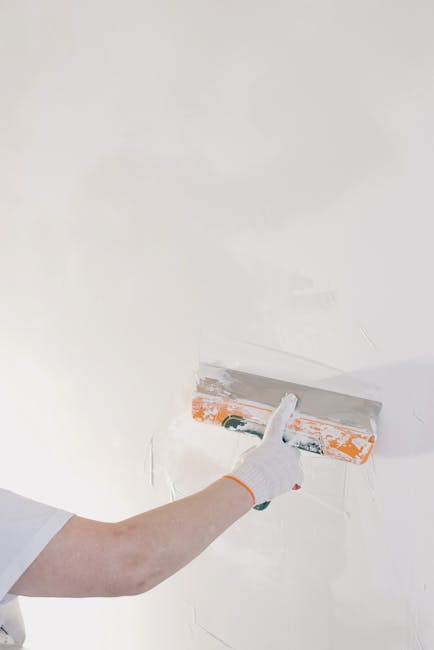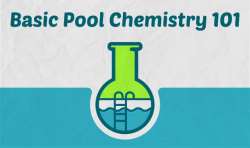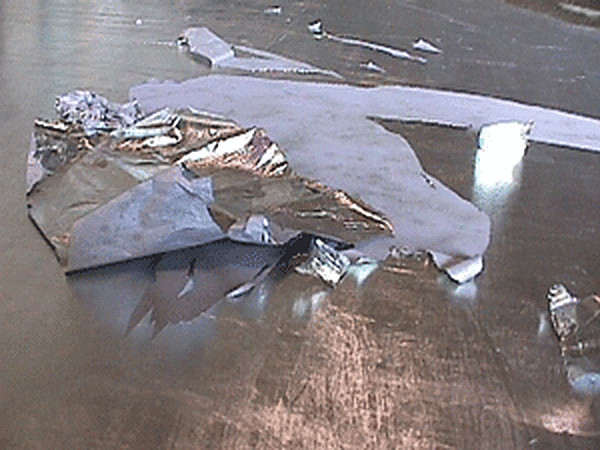If you have a swimming pool, you know how enjoyable it can be to take a refreshing dip on a hot day. But have you ever noticed that the pool plaster starts to deteriorate over time? It can be quite frustrating, to say the least. But don’t worry, because in this article, we’ll explore what causes pool plaster deterioration and discuss the fixes for this common problem. So, let’s dive in!
The Causes of pool plaster deterioration can vary from a chemical imbalance in the water to improper installation or even aging. Over time, the plaster may develop cracks, discoloration, or rough patches, making your pool less inviting. But fear not, there are solutions to address these issues and restore your pool’s beauty and functionality.
So, whether you’re dealing with minor surface imperfections or significant plaster damage, we’ve got you covered. In the next paragraphs, we’ll explore the reasons behind pool plaster deterioration and provide you with practical tips and fixes to get your pool looking as good as new. Get ready to make a splash with a pool that’s not only refreshing but also aesthetically pleasing!
Pool plaster deterioration can be caused by various factors and fixing it is crucial to maintain a well-maintained pool. Causes of pool plaster deterioration can include chemical imbalances, poor maintenance, and natural wear and tear. To fix the issue, start by draining the pool and removing loose plaster. Next, clean the surface thoroughly and repair any cracks or damage. Finally, apply a new layer of plaster or consider alternative pool finishes for long-lasting results.

Understanding Pool Plaster Deterioration: Causes and Fixes
Having a pool in your backyard is a dream for many homeowners. It’s a place where you can relax, cool off, and have fun with family and friends. However, over time, the plaster used to line your pool can deteriorate, leading to a variety of issues. In this article, we will explore the causes of pool plaster deterioration and provide you with effective fixes to keep your pool in top shape.
Understanding Pool Plaster Deterioration
1. Causes of Pool Plaster Deterioration
There are several factors that can contribute to the deterioration of pool plaster. One common cause is improper water chemistry. When the pH, alkalinity, or calcium hardness levels in the pool water are not properly balanced, it can lead to chemical reactions that degrade the plaster over time. Additionally, exposure to harsh weather conditions, such as excessive sunlight or freeze-thaw cycles, can cause the plaster to crack and deteriorate. Another factor is poor construction or installation, where inadequate curing time or improper application techniques result in premature plaster failure.
2. Signs of Pool Plaster Deterioration
Identifying the signs of pool plaster deterioration early on is crucial to prevent further damage. Some common indications include rough or pitted surfaces, discoloration, peeling or flaking, cracks, and hollow spots behind the plaster. You may also notice an increase in the number of algae blooms or difficulty maintaining the water chemistry. If you notice any of these signs, it’s important to take immediate action to address the issue before it worsens.
3. Impact of Pool Plaster Deterioration
Allowing pool plaster deterioration to go unchecked can have serious consequences. Not only does it compromise the structural integrity of your pool, but it also affects the overall appearance and functionality. Damaged plaster can create an uninviting and unsafe swimming environment, with rough surfaces that can cause cuts and abrasions. Moreover, deteriorated plaster can lead to water leaks, resulting in increased water bills and potential damage to surrounding areas.
Fixes for Pool Plaster Deterioration
1. Proper Water Chemistry Maintenance
The key to preventing pool plaster deterioration is to maintain proper water chemistry. Regularly test and adjust the pH, alkalinity, and calcium hardness levels to keep them within the recommended range. This will help prevent chemical imbalances that contribute to plaster degradation. Consult with a pool professional or use a reliable water testing kit to ensure accuracy and precision in maintaining water chemistry.
2. Surface Repairs and Patching
If you notice minor cracks, chips, or small patches of deteriorated plaster, they can often be repaired with a specialized pool plaster patching material. Before applying the patch, clean the affected area thoroughly and remove any loose debris or old plaster. Follow the manufacturer’s instructions for the patching material and ensure that it is compatible with your pool’s plaster type. Once applied, allow sufficient curing time before re-filling the pool.
3. Complete Replastering
In more severe cases of pool plaster deterioration, complete replastering may be necessary. This involves removing the existing plaster down to the pool shell and applying a new layer of plaster. Replastering is a complex process that requires professional expertise, as it involves proper surface preparation, choice of plaster material, and application technique. It is crucial to consult with a reputable pool contractor to ensure that the replastering is done correctly and meets the highest standards.
Tips for Pool Plaster Maintenance
Prolonging the life of your pool plaster and preventing deterioration requires consistent maintenance and care. Here are some tips to help you maintain a beautiful and functional pool:
1. Regular Cleaning
Regularly clean your pool’s surfaces to prevent the buildup of dirt, debris, and algae. Use a pool brush and vacuum to remove any contaminants from the plaster. Be careful not to use abrasive materials or harsh chemicals that can damage the plaster.
2. Balanced Water Chemistry
Maintain proper water chemistry by regularly testing and adjusting the pH, alkalinity, and calcium hardness levels. This will help minimize plaster erosion and prevent chemical imbalances that contribute to deterioration.
3. Avoiding Impact and Sharp Objects
Avoid jumping or diving into the pool in areas where the plaster is vulnerable, such as near steps or benches. Additionally, keep sharp objects, such as toys or gardening tools, away from the pool to prevent accidental damage to the plaster.
Choosing the Right Pool Plaster Material
The choice of pool plaster material plays a significant role in preventing deterioration and ensuring long-lasting durability. Here are three popular options to consider:
1. White Marble Plaster
White marble plaster is a classic choice known for its smooth and elegant finish. It is a cost-effective option and provides a clean and timeless appearance. However, it may require more maintenance and may be susceptible to staining or discoloration over time.
2. Quartz Aggregate Plaster
Quartz aggregate plaster incorporates small quartz crystals for added strength and durability. It offers a more textured finish and is resistant to chemicals and staining. Quartz plaster is a popular choice for those looking for a longer-lasting and low-maintenance option.
3. Pebble Tec Plaster
Pebble Tec plaster consists of small, smooth pebbles embedded in the plaster, creating a unique and visually appealing surface. It is known for its longevity and resistance to cracking. Pebble Tec plaster requires less maintenance, as the pebbles help to hide minor imperfections and stains.
When choosing a pool plaster material, consider your budget, maintenance preferences, and desired aesthetic. Consult with a pool professional to determine the best option for your specific needs.
In summary, understanding the causes of pool plaster deterioration and implementing effective fixes is crucial in maintaining a beautiful and functional pool. By maintaining proper water chemistry, performing timely repairs, and choosing the right plaster material, you can enjoy your pool for years to come. Regular maintenance and care are key to preserving your pool’s integrity and ensuring a safe and enjoyable swimming experience.
Key Takeaways: Pool Plaster Deterioration: Causes and Fixes
- Improper water chemistry can cause pool plaster to deteriorate.
- Poor installation techniques can lead to plaster deterioration over time.
- Excessive sun exposure can cause the plaster to break down.
- Cracks and chips in the plaster should be repaired promptly to prevent further deterioration.
- Regular maintenance and cleaning can help prolong the lifespan of pool plaster.
Frequently Asked Questions
Welcome to our Frequently Asked Questions section about pool plaster deterioration. Here, we will address common concerns related to the causes and fixes for pool plaster deterioration. Read on to uncover valuable insights!
1. What are the primary causes of pool plaster deterioration?
Pool plaster can deteriorate due to a variety of factors. One common cause is improper water chemistry, such as low calcium hardness and high pH levels. This can lead to etching and erosion of the plaster surface. Additionally, improper maintenance practices, such as using abrasive cleaning tools or neglecting to balance chemicals, can accelerate deterioration. Lastly, exposure to freezing and thawing cycles or extreme weather conditions can also cause plaster to crack and deteriorate.
To prevent pool plaster deterioration, it is important to maintain proper water chemistry, regularly balance the chemicals, and avoid harsh cleaning tools. Furthermore, it is recommended to protect the pool from extreme weather conditions by using covers and implementing freeze protection measures during the winter months.
2. Can poor construction practices contribute to pool plaster deterioration?
Yes, poor construction practices can significantly contribute to pool plaster deterioration. Inadequate surface preparation before plastering, such as insufficient bonding or curing time, can lead to premature deterioration. Furthermore, improper material selection or application techniques can result in a weak and susceptible plaster surface. Other construction-related factors, such as inadequate expansion joints or improper waterline tile installation, can also contribute to plaster deterioration.
To avoid potential plaster problems caused by poor construction practices, it is crucial to hire experienced and reputable pool contractors who adhere to industry standards. They should properly prepare the surface, use high-quality materials, and follow correct application techniques. Regular inspections during the construction process can help identify and address any potential issues before they become significant problems.
3. How can you fix minor cracks and imperfections in pool plaster?
For minor cracks and imperfections in pool plaster, there are a few repair options available. One common method is to use a patching compound specifically designed for pool plaster repairs. This compound is typically a blend of cement, sand, and additives that can be applied to fill and seal the cracks. Another option is to use an epoxy or acrylic-based coating that can be applied over the damaged areas to provide a smooth and durable finish.
It is important to address minor cracks and imperfections promptly to prevent further deterioration. Before attempting any repairs, it is recommended to consult with a pool professional who can assess the extent of the damage and provide guidance on the most suitable repair method for your specific situation.
4. What are the signs that indicate the need for pool plaster refinishing?
Several signs indicate the need for pool plaster refinishing. One of the most noticeable signs is the appearance of rough, pitted, or stained areas on the plaster surface. Cracks, blisters, or flaking plaster are also indicators that the plaster may need refinishing. Additionally, if you notice an increased difficulty in maintaining water chemistry balance despite proper maintenance, it may be a sign that the plaster is deteriorating and needs refinishing.
It is recommended to regularly inspect the pool plaster and look out for these signs. Refinishing the pool plaster in a timely manner can help restore its appearance, prevent further deterioration, and prolong the lifespan of the pool surface.
5. How often should pool plaster be inspected and maintained to prevent deterioration?
To prevent pool plaster deterioration, regular inspection and maintenance are crucial. It is recommended to inspect the plaster surface at least once a year, looking for signs of cracks, stains, or rough areas. Additionally, maintaining proper water chemistry balance by regularly testing and balancing chemicals is essential. Brushing the pool regularly to remove any debris or algae growth can also help prevent deterioration.
By implementing a proactive approach to maintenance, you can identify and address any issues before they worsen, ultimately extending the life of your pool plaster. Consulting with a pool professional for a more detailed maintenance schedule based on your specific pool and usage is highly recommended.

Summary
The plaster in your swimming pool can deteriorate due to factors like age, water chemistry, and poor maintenance. When the plaster starts to crack, discolor, or peel, it’s important to take action. Regular cleaning and balancing water chemistry can prevent further damage. Using sealants or patches can fix minor cracks, while re-plastering is necessary for more severe damage. Remember to keep up with regular pool maintenance to keep your pool looking and functioning its best.
In conclusion, understanding the causes of pool plaster deterioration and knowing the appropriate fixes can help you maintain a healthy and beautiful swimming pool for years to come.
- Unveiling the Truth: Weightlifting for Women and Strength Building - November 4, 2024
- The Ultimate Guide to Weightlifting for Beginners - November 4, 2024
- Boost Your Mood and Ease Anxiety with Cardio Exercises - November 4, 2024



